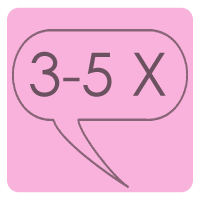 Modeling in Language Learning
Modeling in Language Learning
 Teacher modeling is an essential part of the Giving It stage of the B-SLIM model. When new information (i.e. new vocabulary words, phrases, expressions, etc.) is presented to students, they need to be shown (i) how to use the new concepts correctly and (ii) how to pronounce these words properly. This needs to be a repetitive process. In other words, simply stating the new words or phrases for students once isn’t enough; they need to be exposed to them many times before they will be able to accurately reproduce the words themselves. By modeling pronunciation and word/phrase use for students, teachers may find that students will be more willing to try saying new things and will experiment more freely in the language classroom. How can teachers get their students to reach this point? Teacher modeling is an essential part of the Giving It stage of the B-SLIM model. When new information (i.e. new vocabulary words, phrases, expressions, etc.) is presented to students, they need to be shown (i) how to use the new concepts correctly and (ii) how to pronounce these words properly. This needs to be a repetitive process. In other words, simply stating the new words or phrases for students once isn’t enough; they need to be exposed to them many times before they will be able to accurately reproduce the words themselves. By modeling pronunciation and word/phrase use for students, teachers may find that students will be more willing to try saying new things and will experiment more freely in the language classroom. How can teachers get their students to reach this point? |
|
What is modeling?
In the context of language learning, the term ‘modeling’ refers to the teacher or instructor demonstrating the pronunciation of a word so that the learners can hear how it is supposed to sound and then mimic and practice the pronunciation.
How much modeling needs to be done?
A key to successful modeling is the frequency of exposure to the new material: students are more likely to remember a word when they have heard it more than once. Generally speaking, the more exposure to the language and the greater the frequency of such exposure, the quicker the language will be learned.
 Research has shown that it takes three to five instances of repetition and/or exposure for new material, such as new words, to be imprinted in the student’s mind. For example, the teacher could model the new words for their students and have them say the words back, repeating the exchange three to five times. This would give the students a chance to practice the pronunciation and the teacher would have a chance to do necessary corrections. After this kind of exchange, it is important for the students to make use of the new words through a variety of Getting It activities via pair or group work where they can continue making connections between the words and their meaning.
Research has shown that it takes three to five instances of repetition and/or exposure for new material, such as new words, to be imprinted in the student’s mind. For example, the teacher could model the new words for their students and have them say the words back, repeating the exchange three to five times. This would give the students a chance to practice the pronunciation and the teacher would have a chance to do necessary corrections. After this kind of exchange, it is important for the students to make use of the new words through a variety of Getting It activities via pair or group work where they can continue making connections between the words and their meaning.
How can I model the new vocabulary in an interesting way?
In order to create connections to students' interests and backgrounds through modeling, words and concepts can be introduced in context. When a word is presented in context, it creates a real-life related, referential memory device associated with the word that the student can draw upon to help them remember and create understanding for the meaning of the word. To learn more about creating context in a lesson click here.



